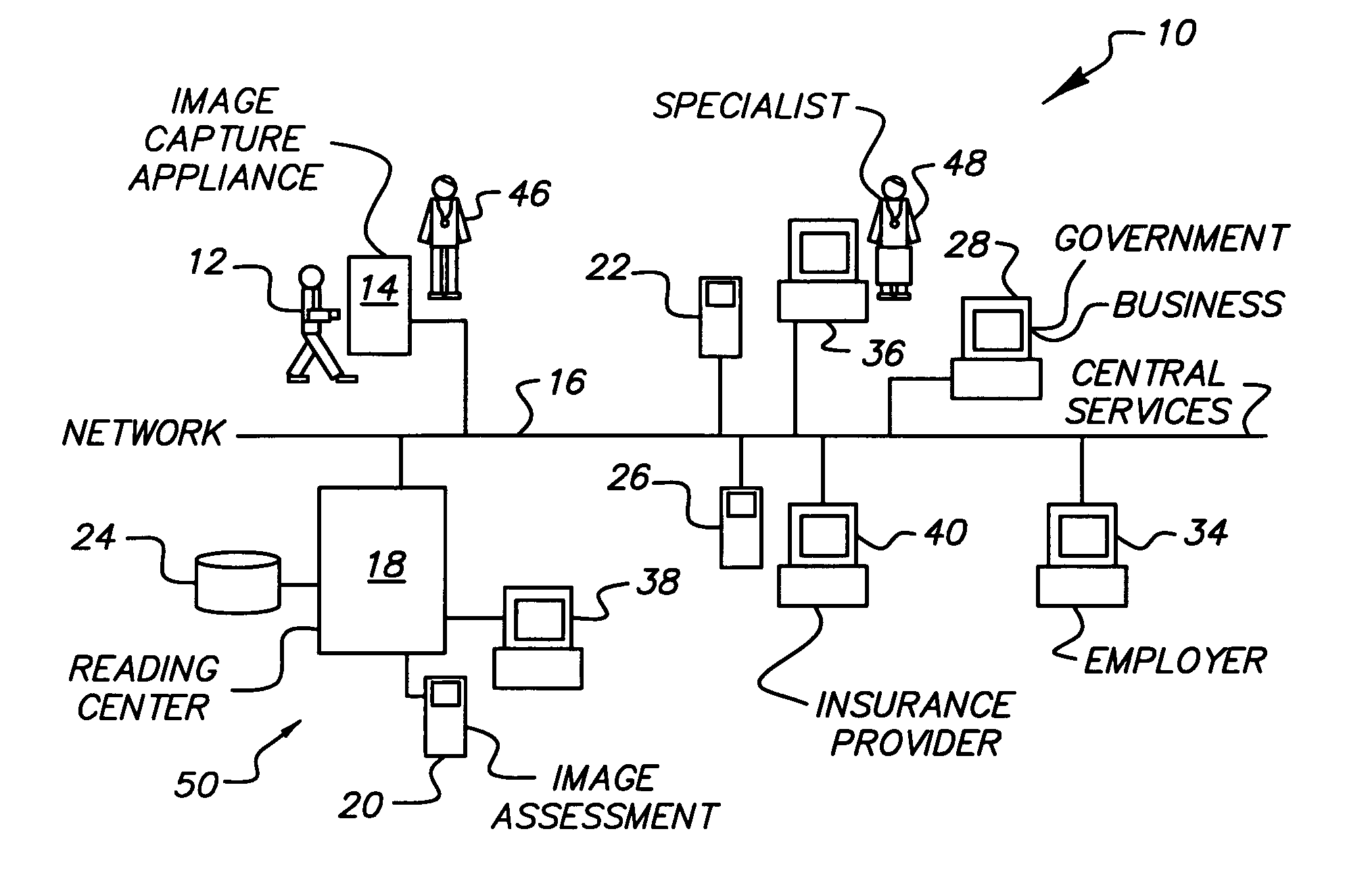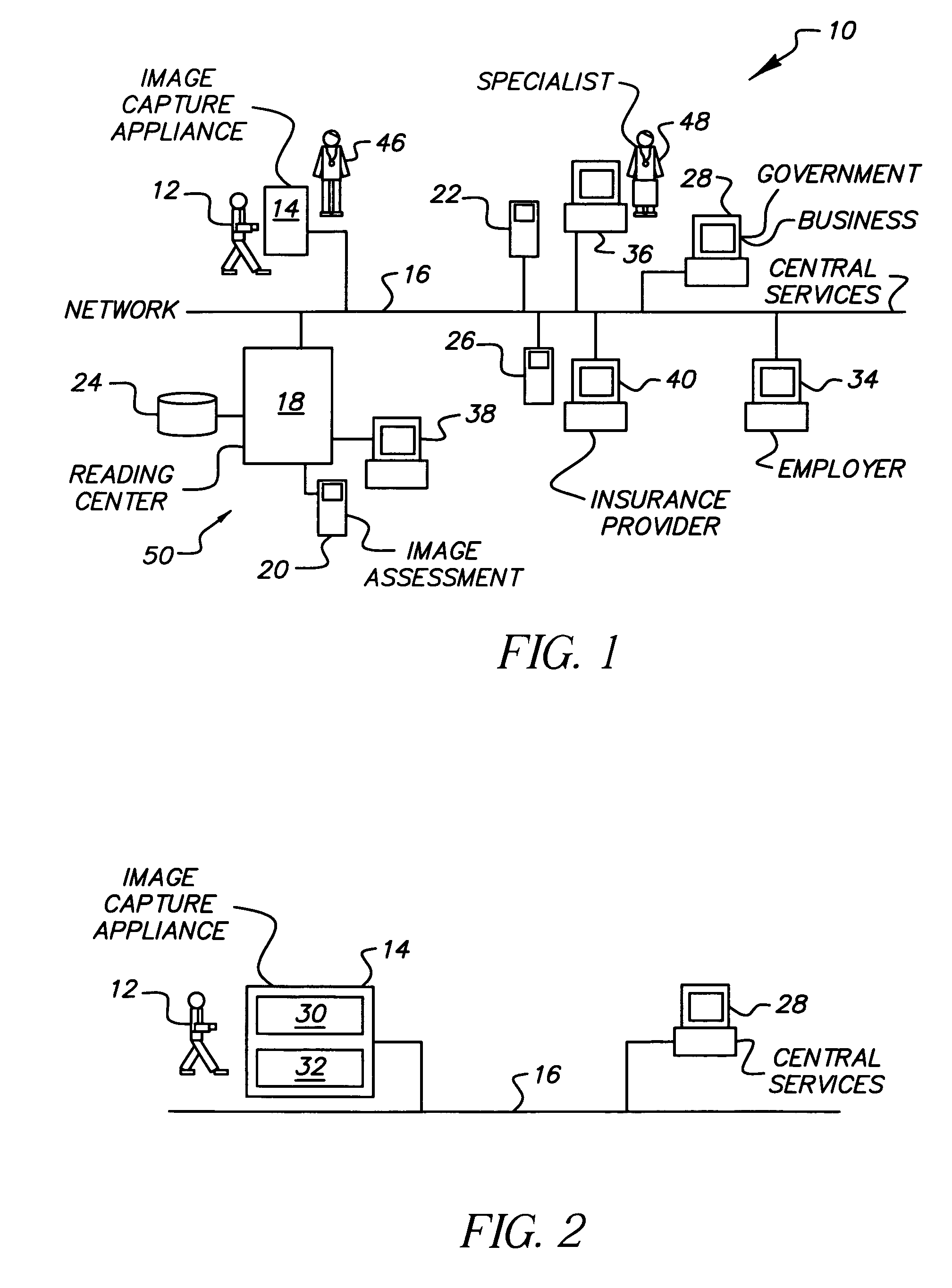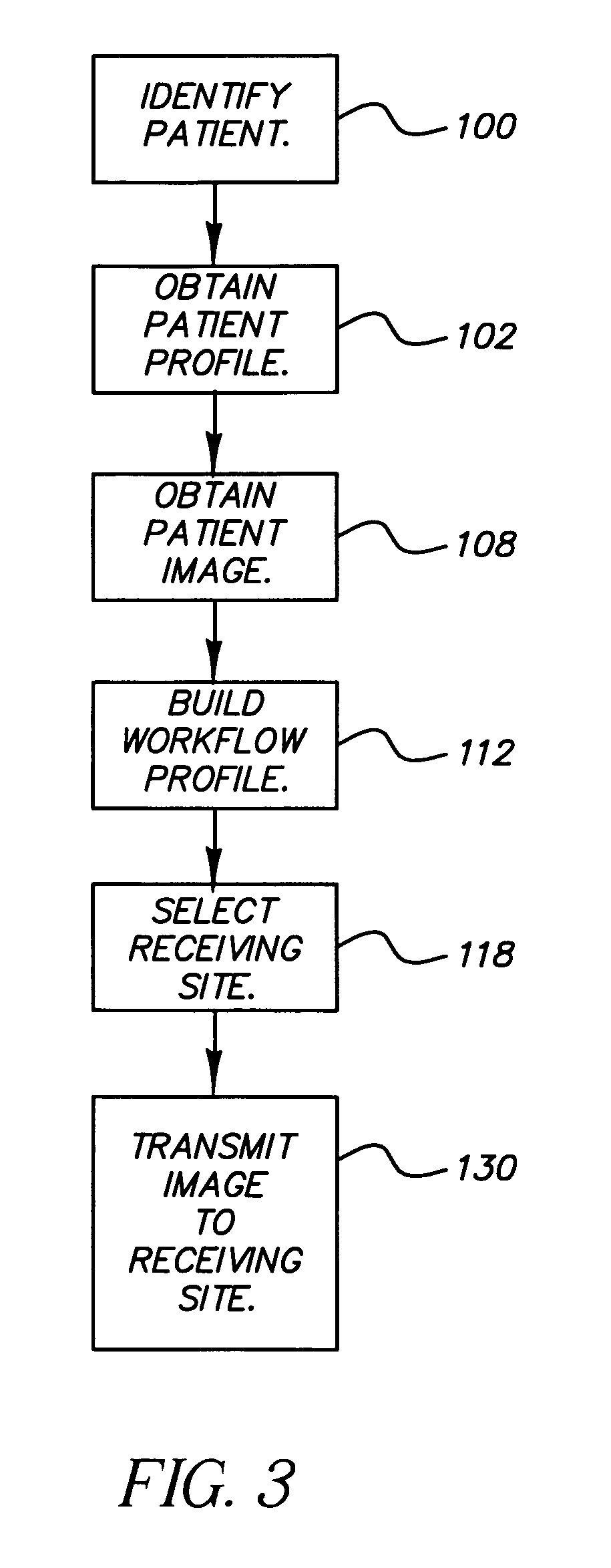Networked system for routing medical images
a networked system and medical data technology, applied in the field of networked systems for obtaining, evaluating, and managing medical data, can solve the problems of inflexible and unsuitable restrictions, cumbersome adaptation of inflexible systems, and severe vision impairment and blindness, and achieves convenient operation and convenient configuration.
- Summary
- Abstract
- Description
- Claims
- Application Information
AI Technical Summary
Benefits of technology
Problems solved by technology
Method used
Image
Examples
example
[0117] As an example using the method of the present invention, during the routine visit by a patient to a first site, which may be primary care practice office, a retinal image is acquired. The system prompts for the patient's identification from the image acquisition operator, or automatically requests it from a medical practice management system. This identification is used by the system to access the patient profile. Since the patient is covered by an insurance company, the system proceeds to access the insurance company's profile to determine which health plan is applicable to the patient based on the patient's employer id and plan option. From the applicable healthcare plan the system extracts the plan's eligibility requirements for the exam. For example, an exam may be covered once a year provided the images are read by an approved ophthalmic specialist. The patient profile is checked to verify that the patient's previous exam was more than a year ago.
[0118] The system next ...
PUM
 Login to View More
Login to View More Abstract
Description
Claims
Application Information
 Login to View More
Login to View More - R&D
- Intellectual Property
- Life Sciences
- Materials
- Tech Scout
- Unparalleled Data Quality
- Higher Quality Content
- 60% Fewer Hallucinations
Browse by: Latest US Patents, China's latest patents, Technical Efficacy Thesaurus, Application Domain, Technology Topic, Popular Technical Reports.
© 2025 PatSnap. All rights reserved.Legal|Privacy policy|Modern Slavery Act Transparency Statement|Sitemap|About US| Contact US: help@patsnap.com



